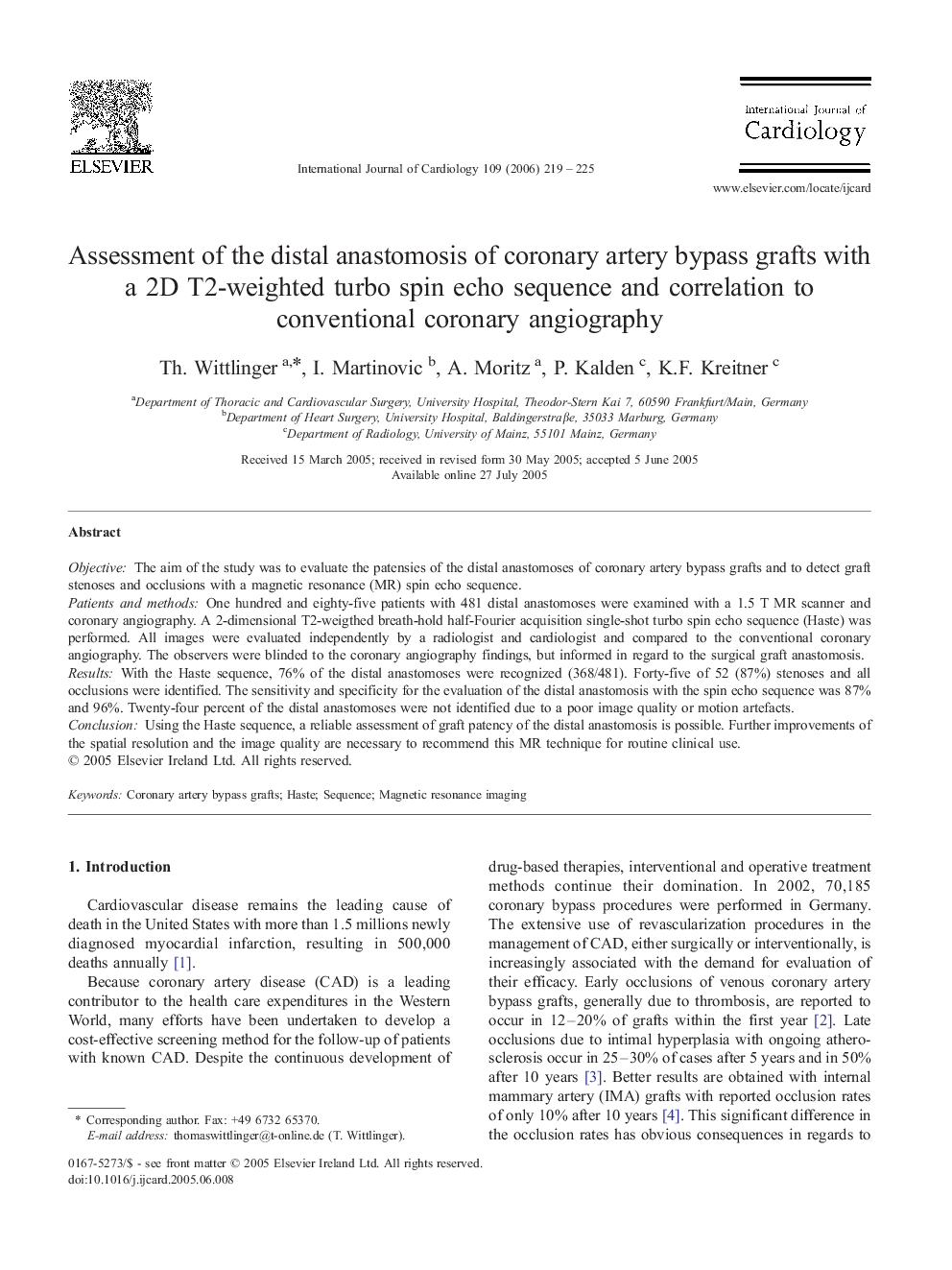| Article ID | Journal | Published Year | Pages | File Type |
|---|---|---|---|---|
| 2936379 | International Journal of Cardiology | 2006 | 7 Pages |
ObjectiveThe aim of the study was to evaluate the patensies of the distal anastomoses of coronary artery bypass grafts and to detect graft stenoses and occlusions with a magnetic resonance (MR) spin echo sequence.Patients and methodsOne hundred and eighty-five patients with 481 distal anastomoses were examined with a 1.5 T MR scanner and coronary angiography. A 2-dimensional T2-weigthed breath-hold half-Fourier acquisition single-shot turbo spin echo sequence (Haste) was performed. All images were evaluated independently by a radiologist and cardiologist and compared to the conventional coronary angiography. The observers were blinded to the coronary angiography findings, but informed in regard to the surgical graft anastomosis.ResultsWith the Haste sequence, 76% of the distal anastomoses were recognized (368/481). Forty-five of 52 (87%) stenoses and all occlusions were identified. The sensitivity and specificity for the evaluation of the distal anastomosis with the spin echo sequence was 87% and 96%. Twenty-four percent of the distal anastomoses were not identified due to a poor image quality or motion artefacts.ConclusionUsing the Haste sequence, a reliable assessment of graft patency of the distal anastomosis is possible. Further improvements of the spatial resolution and the image quality are necessary to recommend this MR technique for routine clinical use.
